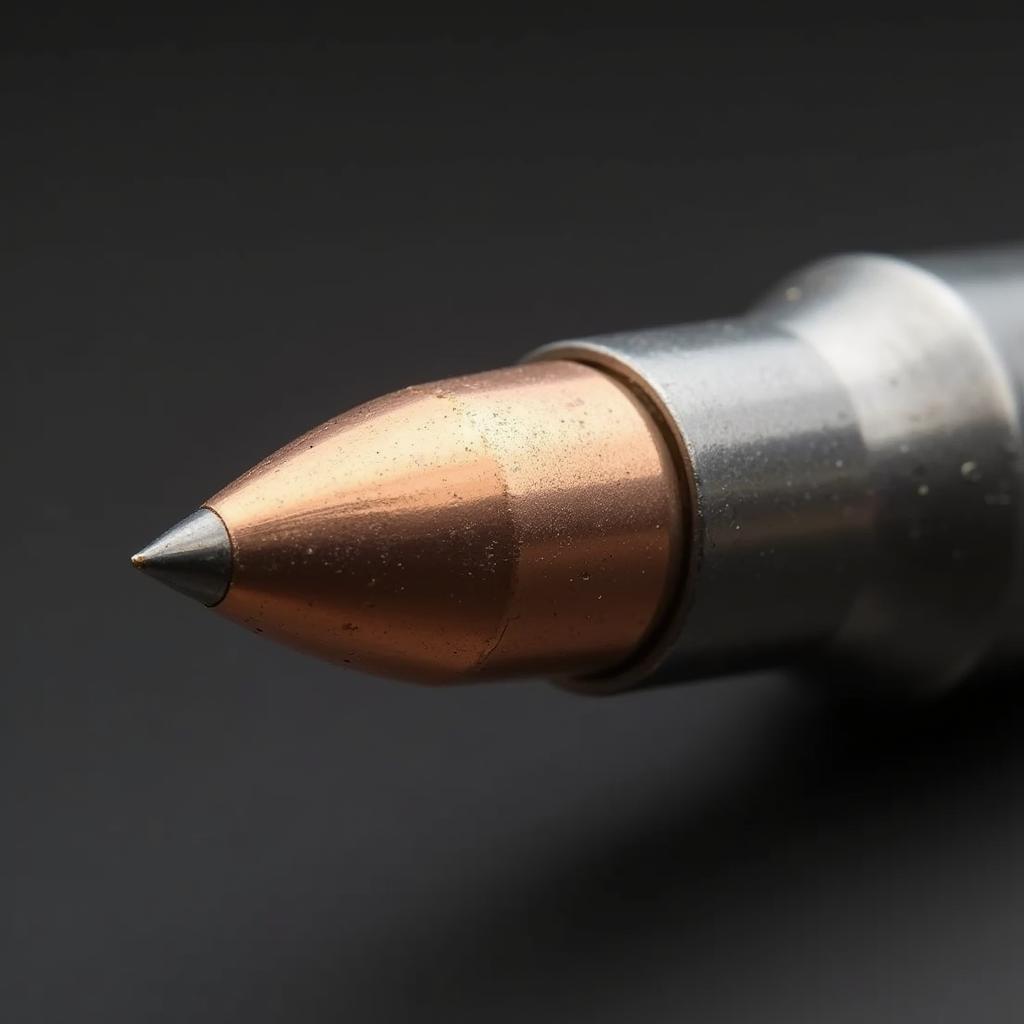Flatline Bullets, also known as wadcutter bullets, are a distinctive type of projectile used in shooting disciplines. Their unique design sets them apart from traditional round-nose bullets and offers specific advantages for target shooting. This guide delves into the world of flatline bullets, exploring their characteristics, advantages, and ideal applications.
What are Flatline Bullets?
 Flatline Bullet Profile
Flatline Bullet Profile
Unlike the rounded profile of standard bullets, flatline bullets feature a completely flat front. This design results in a sharp shoulder and clean edges, giving the bullet a cylindrical appearance. Typically made from lead, flatline bullets are often found in calibers suitable for target shooting, such as .22LR, .32 S&W Long, and .38 Special.
The Advantages of Flatline Bullets
The unique construction of flatline bullets lends itself to several key advantages, particularly in target shooting scenarios:
-
Cleaner Holes: The sharp edges of flatline bullets punch out cleaner holes in paper targets compared to round-nose bullets. This clean cut makes scoring easier and more precise, especially at longer ranges where bullet deformation can impact accuracy.
-
Reduced Ricochet Risk: The flat profile of these bullets significantly reduces the risk of ricochet compared to their rounded counterparts. This characteristic makes them a safer choice for shooting ranges and target practice.
-
Enhanced Accuracy: While not as aerodynamic as round-nose bullets, flatline bullets excel in short to medium-range accuracy. Their design minimizes deformation upon impact, leading to more consistent shot placement.
Applications of Flatline Bullets
Due to their accuracy and clean-cutting properties, flatline bullets are primarily used in:
-
Target Shooting: Disciplines like bullseye shooting, where precise shot placement is crucial, benefit significantly from flatline bullets.
-
Plinking: For recreational shooting at paper targets, flatline bullets provide a satisfying experience with easily discernible results.
-
Training: Their reduced ricochet risk and consistent accuracy make flatline bullets suitable for training purposes, especially for novice shooters.
Factors to Consider When Using Flatline Bullets
While flatline bullets offer distinct advantages, it’s important to consider certain factors:
-
Velocity and Trajectory: Flatline bullets generally have a lower velocity and a more arched trajectory compared to round-nose bullets. Shooters need to adjust their aim accordingly, especially at longer distances.
-
Wind Drift: The less aerodynamic shape of flatline bullets makes them more susceptible to wind drift. Wind conditions should be factored in, especially for precision shooting.
-
Barrel Leading: The softer lead composition of flatline bullets, combined with their flat profile, can sometimes lead to increased barrel leading. Regular cleaning is crucial to maintain optimal firearm performance.
Conclusion
Flatline bullets, with their unique design and advantages, have secured a significant place in the realm of shooting, particularly for target practice and competition. Their ability to create clean holes, minimize ricochet, and deliver consistent accuracy makes them a preferred choice for discerning marksmen. By understanding their characteristics and optimal applications, shooters can harness the benefits of flatline bullets to enhance their shooting experience and achieve superior results.





